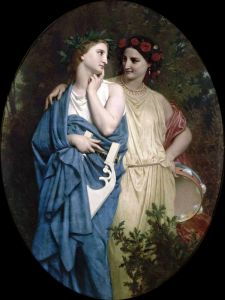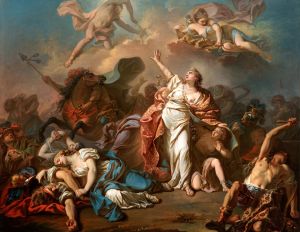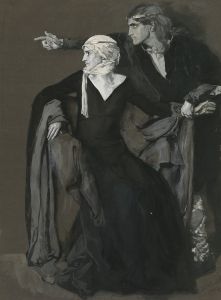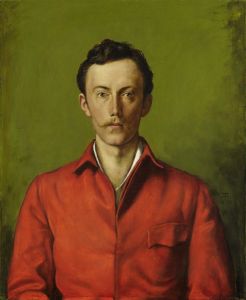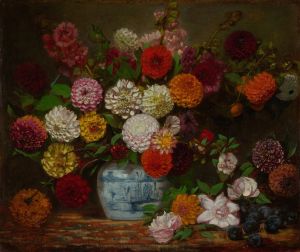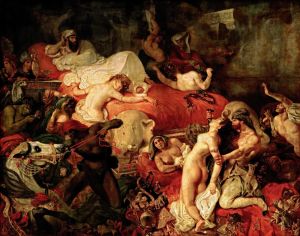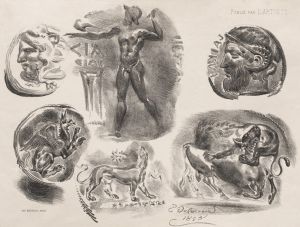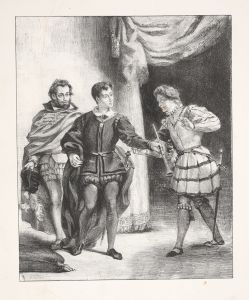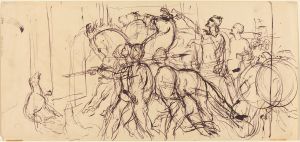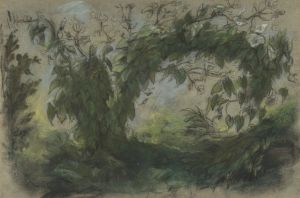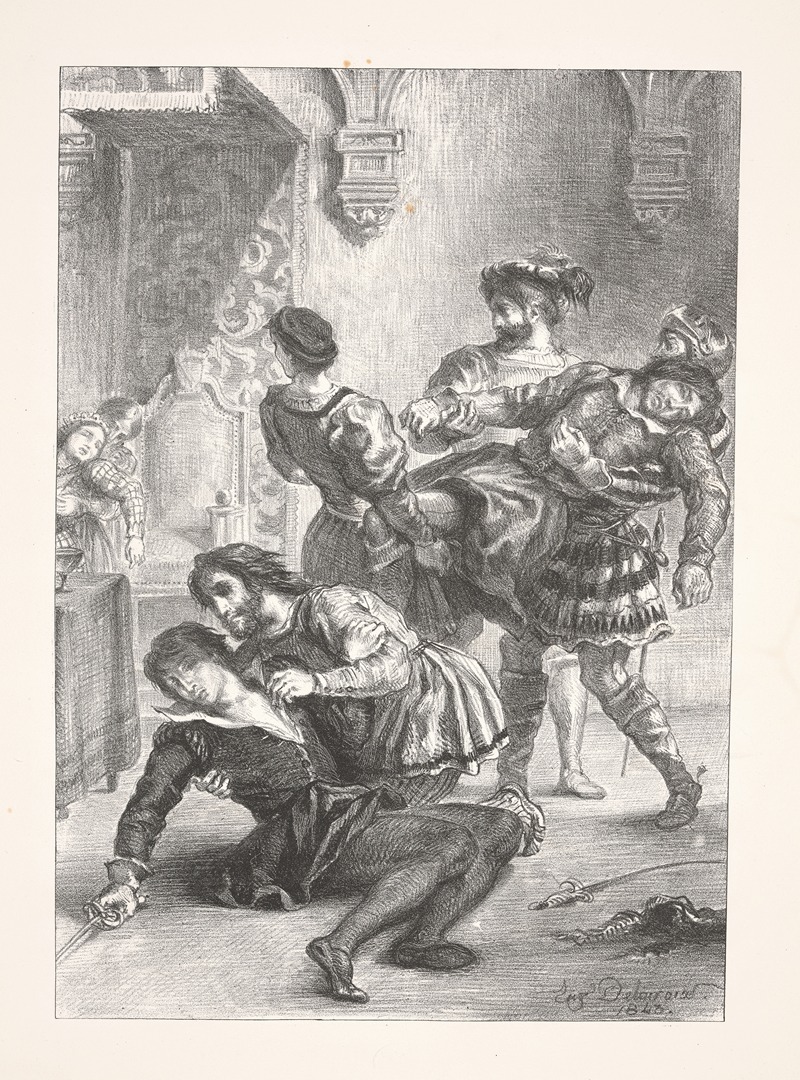
The death of Hamlet
A hand-painted replica of Eugène Delacroix’s masterpiece The death of Hamlet, meticulously crafted by professional artists to capture the true essence of the original. Each piece is created with museum-quality canvas and rare mineral pigments, carefully painted by experienced artists with delicate brushstrokes and rich, layered colors to perfectly recreate the texture of the original artwork. Unlike machine-printed reproductions, this hand-painted version brings the painting to life, infused with the artist’s emotions and skill in every stroke. Whether for personal collection or home decoration, it instantly elevates the artistic atmosphere of any space.
Eugène Delacroix, a prominent French Romantic artist, is renowned for his expressive brushwork and vibrant use of color. One of his notable works is "The Death of Hamlet," which captures a dramatic moment from William Shakespeare's famous tragedy, "Hamlet." Delacroix's interpretation of this scene reflects his deep engagement with literary themes and his ability to convey intense emotion through his art.
"The Death of Hamlet" is part of Delacroix's broader interest in Shakespearean subjects, which he explored throughout his career. Delacroix was deeply inspired by the dramatic and emotional depth of Shakespeare's plays, and he often sought to translate these qualities into his paintings. His fascination with literature and theater is evident in his choice of subjects, as he frequently depicted scenes from the works of Shakespeare, Goethe, and other literary giants.
In "The Death of Hamlet," Delacroix focuses on the climactic final scene of the play, where Hamlet, the Prince of Denmark, meets his tragic end. The painting captures the chaos and emotional intensity of the moment, as Hamlet lies dying after being wounded in a duel with Laertes. The composition is dynamic, with figures arranged in a way that emphasizes the drama and tension of the scene. Delacroix's use of color and light further enhances the emotional impact, drawing the viewer into the tragedy unfolding before them.
Delacroix's style in this painting is characteristic of the Romantic movement, which emphasized emotion, individualism, and the sublime. His brushwork is loose and expressive, capturing the movement and energy of the scene. The colors are rich and varied, with deep reds and dark shadows creating a sense of foreboding and tragedy. Delacroix's ability to convey complex emotions through his use of color and form is one of the hallmarks of his work, and "The Death of Hamlet" is a prime example of this skill.
The painting also reflects Delacroix's interest in the human condition and the exploration of themes such as mortality, fate, and the struggle between good and evil. By choosing to depict the death of Hamlet, Delacroix engages with the existential questions posed by Shakespeare's play, inviting viewers to reflect on the nature of life and death, and the consequences of human actions.
Delacroix's "The Death of Hamlet" is not just a visual representation of a literary scene; it is an exploration of the emotional and philosophical depths of Shakespeare's work. The painting stands as a testament to Delacroix's ability to merge literature and visual art, creating a powerful and evocative piece that continues to resonate with audiences today.
While "The Death of Hamlet" may not be as widely known as some of Delacroix's other works, such as "Liberty Leading the People," it remains an important part of his oeuvre, showcasing his skill as a painter and his deep appreciation for the dramatic arts. Through this painting, Delacroix invites viewers to experience the tragedy of Hamlet in a new and profound way, highlighting the enduring power of both Shakespeare's words and Delacroix's artistic vision.





